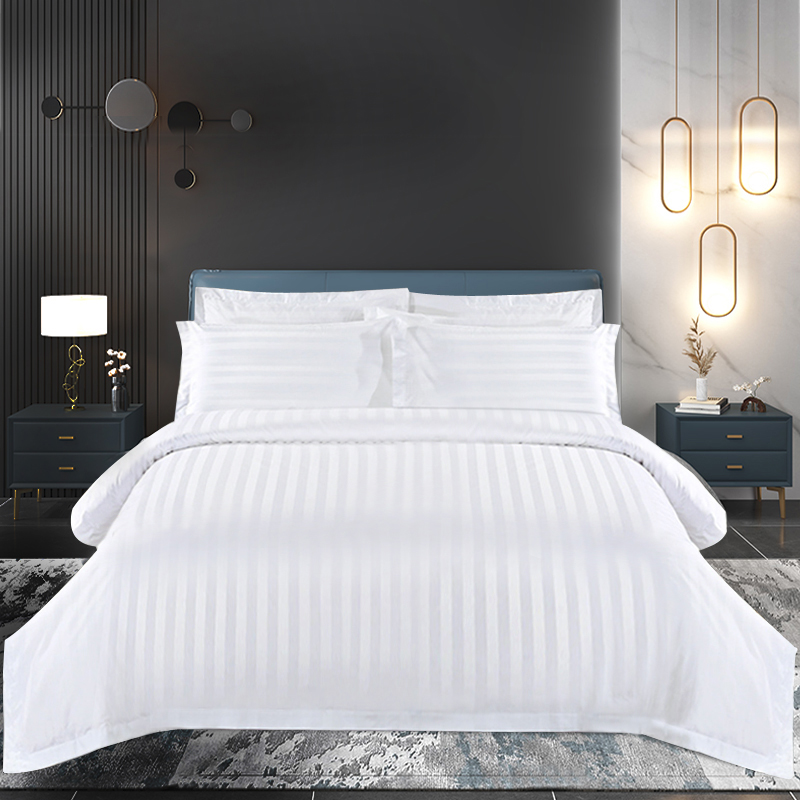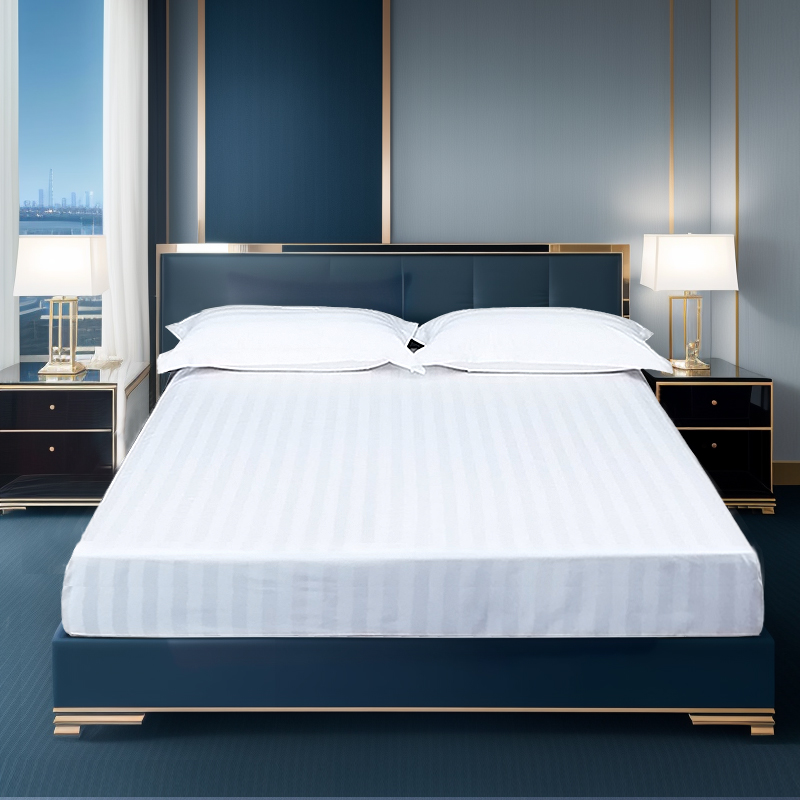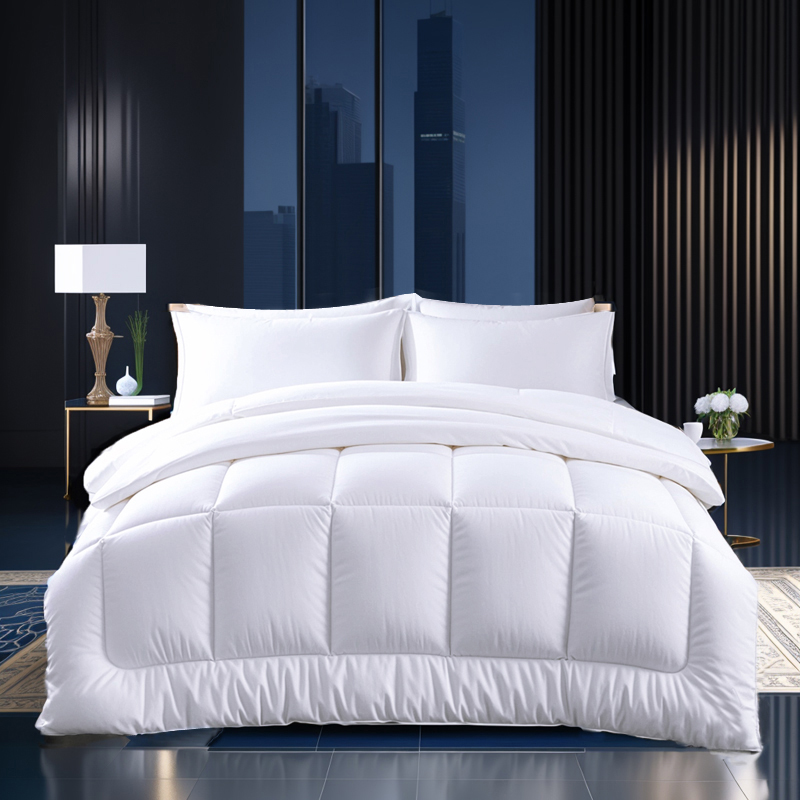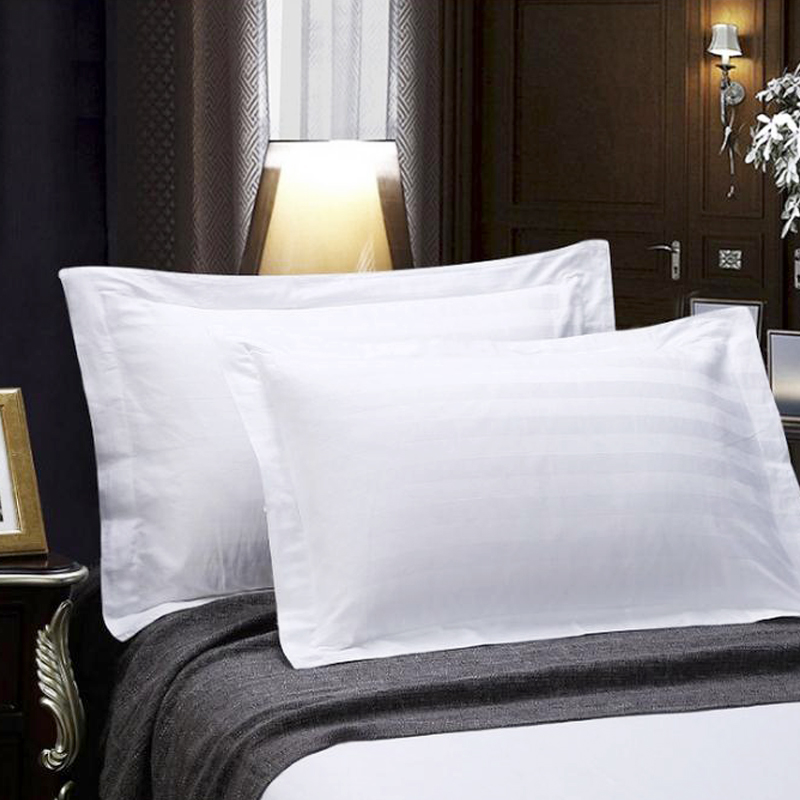How does the edge stitching process of thick striped fitted sheets enhance their structural stability?
Release Time : 2025-07-15
The edge stitching process of thick striped fitted sheet is the basic link to enhance its structural stability. By tightly connecting the fabric of thick striped fitted sheet with the edging material, a solid whole is formed to avoid structural deformation caused by loose edges during daily use. The edge of thick striped fitted sheet is the part where the force is concentrated. Especially when wrapping the mattress, the edge needs to withstand the tension from all directions. If the stitching process is not good, the edge is prone to cracking or derailment, which will affect the shape of the entire thick striped fitted sheet. The fine stitching process can make the edge fabric and the edging strip tightly combined to form a solid line of defense, evenly distributing the tension to the stitching line and fabric, preventing the edge from being damaged due to excessive local force, and laying the foundation for the stability of the overall structure.
Reasonable stitching method can improve the tensile resistance of the edge and keep the shape of thick striped fitted sheet stable during repeated use. Common lock stitching or edging stitching can wrap the edge of the fabric inside to prevent the fabric fibers from loosening due to friction. At the same time, the interwoven structure formed by the stitching line can enhance the toughness of the edge. When the thick striped fitted sheet is put on the mattress, the edge will be stretched to fit the thickness of the mattress. At this time, the interwoven structure of the stitching can disperse the stretching force in multiple directions like a net, reducing the force on a single thread and thus preventing the stitching from breaking. This stretch resistance allows the thick striped fitted sheet to not sag or deform at the edge even when it is frequently put on or the thickness of the mattress changes slightly, always keeping a close fit with the mattress and maintaining the stability of the overall structure.
The matching degree between the stitching and the fabric is also an important factor affecting the structural stability of the edge stitching process. If the strength and toughness of the stitching do not match the fabric of the thick striped fitted sheet, a thread that is too thin or insufficient in strength will easily break when subjected to force, and a thread that is too thick may wear the fabric and cause holes at the edge. The appropriate stitching will adapt to the characteristics of the fabric, the thickness and material of the thread can complement the fabric, the strength of the thread is sufficient to withstand the force generated when the fabric is stretched, and the flexibility of the thread can bend with the deformation of the fabric, and will not cut the fabric due to being too hard. This matching makes the stitching part an organic whole, which works together when subjected to force, avoids structural damage caused by mismatch between thread and fabric, and further enhances the stability of the edge.
Fine and uniform stitches can reduce edge wear, extend the service life of thick striped fitted sheet, and indirectly ensure the long-term stability of the structure. The density of stitching will affect the wear resistance of the edge. When the stitches are too sparse, there are fewer connection points between the fabric and the hemming strip. When the force is applied, the pressure of each connection point increases, which is prone to local wear; when the stitches are too dense, the fabric may be pierced too many times by the stitches, reducing the strength of the fabric itself. Uniform and fine stitches can increase the number of connection points while ensuring the strength of the fabric, so that the pressure is evenly distributed and single-point wear is reduced. At the same time, uniform stitches can make the force on the edge more balanced, avoid local weakness caused by uneven stitches, keep the edge intact in long-term friction, and ensure that the structure of thick striped fitted sheet is always stable.
The reinforcement treatment in the edge stitching process can focus on the protection of vulnerable parts and improve the reliability of the overall structure. The corners of thick striped fitted sheets are the weak points of edge stitching and the most prone to cracking. In these places, the stitching process usually uses back stitching or double stitching for reinforcement. By increasing the density and number of interweaving of stitches, the tear resistance of the corners is enhanced. When the thick striped fitted sheet is put on the mattress, the corners need to withstand greater tension. The reinforced stitching can lock the fabric firmly in these places to prevent tearing due to excessive tension and ensure the structural integrity of the corners. This targeted reinforcement process improves the stability of the edge and avoids the impact of local damage on the overall structure.
The degree of integration between the stitching process and the fabric will affect the edge's ability to resist deformation, thereby maintaining the overall shape of the thick striped fitted sheet. If there are gaps between the fabric and the hemming strip during stitching, these gaps will gradually expand during use, causing wrinkles or loosening on the edge, affecting the fit of the thick striped fitted sheet. Tight stitching allows the fabric to fit perfectly with the hemming strip without any extra space. The edge will remain flat and straight, and will quickly return to its original shape even after repeated stretching without obvious deformation. This tight combination makes the edge a supporting frame for the thick striped fitted sheet, ensuring that the thick striped fitted sheet can maintain a flat surface and appropriate tightness after being put on the mattress, enhancing the stability of the overall structure.
High-quality stitching technology can improve the edge's resistance to washing and drying, so that the thick striped fitted sheet remains stable after multiple washing and drying. The impact of water flow during washing and the pulling during drying can easily loosen the edge stitching or cause the fabric to shrink and deform. If the stitching technology is not good, the edge may become untied or curled after several washings. The specially treated stitching and fine stitching method can resist the impact of water flow and the shrinkage of the fabric. The stitching will not loosen easily, and the connection between the fabric and the hemming strip will not separate due to shrinkage. This anti-washing and sun-drying ability allows the edges of the thick striped fitted sheet to remain firm during long-term use, ensuring that the overall structure will not be damaged by washing and sun-drying, maintaining stable performance and shape.







